Thessaloniki
The local Jewish community, before the Holocaust, was the largest such community in Greece, and Thessaloniki was considered “The metropolis of Israel, the city of Justice, the mother of Israel same as Jerusalem itself (ir veem beisrael), according to the words of the poet Samuel Usques. The port of Thessaloniki used to be closed on Shabbat! Before World War II, there were 56.000 Jews living in Thessaloniki, but only 1.950 survived the Holocaust. Today, the Jewish community has approximately 1.500 members.
The Monastirioton Synagogue
35, Sygrou St.
It was built in 1927-28 by Jews originally from Monastir (in what for a time was Yugoslavia) and was officially dedicated by the Chief Rabbi of Thessaloniki Chaim Raphael Habib on 27 Elul 5687 (1927). It was saved during the war after being requisitioned by the Red Cross. In June 1978 the earthquake that shook the city caused extensive damage to the building and its services were suspended until the delicate task of its restoration was completed, with funds provided by the Greek Government that considered it as one of the historical monuments of Thessaloniki. Today, it is open primarily on High Holidays and special occasions.
“Yad Lezicaron” Synagogue
24, Vas. Irakliou St.
This Synagogue was opened in 1984, dedicated to the memory of the victims of the Holocaust. It was built on the site of the small “Bourla” prayer house (Caal de la Plaza) that had been operating since 1921 to meet the religious needs of the numerous Jews who worked in the nearby market place.
“Museo Djudio de Salonik” – Jewish museum of Thessaloniki
Venizelou and 13, Ayiou Mina St.
It includes:
- a) The Simon Marks Photographic Exhibit “Thessaloniki, Sephardic Metropolis”, collection assembled through the efforts of the late Myriam Novitch of the kibbutz Beth Lohamei HaGettaoth in Israel, incorporating details of the history of the Jews and their fields of activity up to the time of the Holocaust.
- b) “Memorias”, the Bar Ilan University exhibit of religious and folkloric material. It comprises artefacts and memorabilia that belonged to Jews who immigrated to Eretz Israel when it was still under the British Mandate.
- c) The permanent collection of the Museum, (which is still in the course of being studied, documented and exhibited) . One gallery is about the Holocaust.
Tel. & fax: +2310 250406-7
email: jctmuseo@compulink.gr
web site: www.jmth.gr
Visiting hours:
Tues. to Fri. 11:00 am – 2:00 pm
Wed. & Thurs. 5:00 pm – 8:00 pm
Sunday 11:00 -2:00 pm
Summer schedule (From 1/07/ to 1/08:
Monday to Friday 10:00 am – 2:00 pm.
Cemetery and Memorial to Holocaust victims
in the suburb of Stavroupolis
In light of the history of the Thessaloniki Jewish presence, a stroll through the city can be exciting, as well as sad and evocative. Many of the 19th Jewish konaks (town houses) can still be seen.
The most important are:
“Villa Allatini”
198 Vas. Olgas St.
A work by the Italian architect Vitaliano Pozelli. It was built in 1888 as the summer residence of the Allatini family, a family famous for both its business and community activities. Between 1909 and 1912 it was used as the prison-residence of Abdul Hammid II, who was overturned by the Young Turks. In 1926 it hosted the newly founded University of Thessaloniki while during the 1940-41 War it was used as a hospital. Today, Villa Allatini houses the Prefecture of Thessaloniki. Other monumental buildings that belonged to the Allatini family and are still in use today are the mills on Antheon Str. and their Bank on Stock Market Square.
“Villa Fernandez” (Casa Bianca)
at the corner of Vas. Olgas and Th. Sofouli St.
Built in 1910 by the Italian architect Pierro Arigoni as a residence of the Jewish businessman Dino Fernandez, it has since been associated with the romantic involvement of his daughter Aline with Lieutenant Aliberti.
“Villa Mordoh”
162, Vas. Olgas St.
Built by the Greek architect Xenophon Paeonides in 1905 as a residence of the Turkish Division Commander Saifulah Pasha. In 1923 it was bought by the Jewish family Schialom and in 1930 by another Jewish family, the Mordochs. After World War II it housed successively the services of ELAS, the 3rd Army Corps headquarters, and the Social Security Institution of the City of Thessaloniki. Today it is used by the Municipality of Thessaloniki as an Exhibition Hall for paintings.
“Villa Jacob Modiano”
68, Vas. Olgas St.
It was built in 1906 as the residence of Jacob Modiano by the engineer Eli Modiano. In 1913 the villa was bought by the City of Thessaloniki and offered as a palace to King Constantine. It was used in the inter-war period as the residence of the Governor General of Macedonia, and it later housed the Military School of Medicine. Since 1970 it has been housing the Macedonian Popular Art Museum.
The visitor interested in the sites associated with the Jewish Community of Thessaloniki can also visit the picturesque Modiano Market (Vas. Herakliou St.), the “Saul Modiano Arcade” and the Hippocrates Hospital (Konstantinoupoleos Fleming St.), built in 1907 by the Jewish Community with the financial support of Baroness Clara de Hirsch.
Based in part on Jewish Sites and Synagogues of Greece –
Nicholas P. Stavroulakis and Timothy J. DeVinney – Talos press

